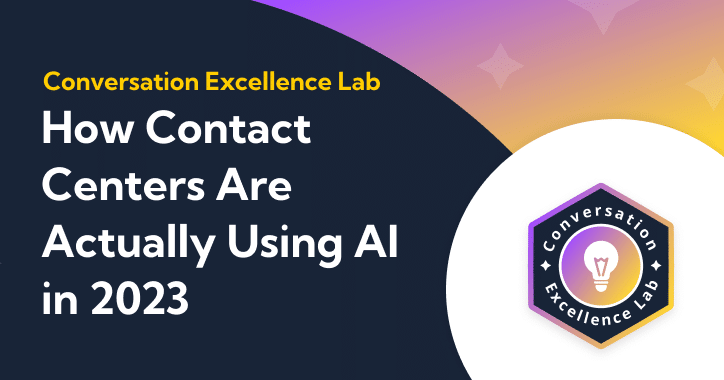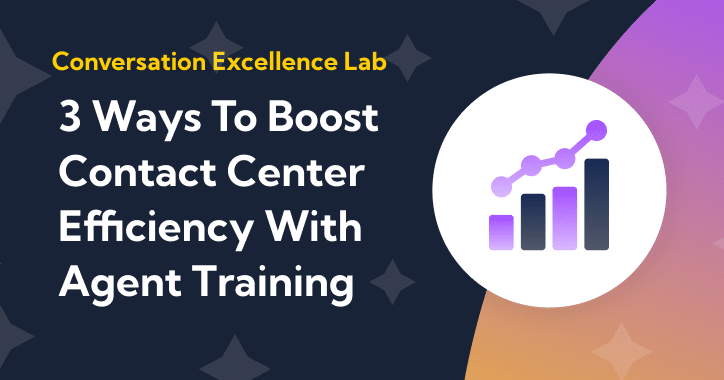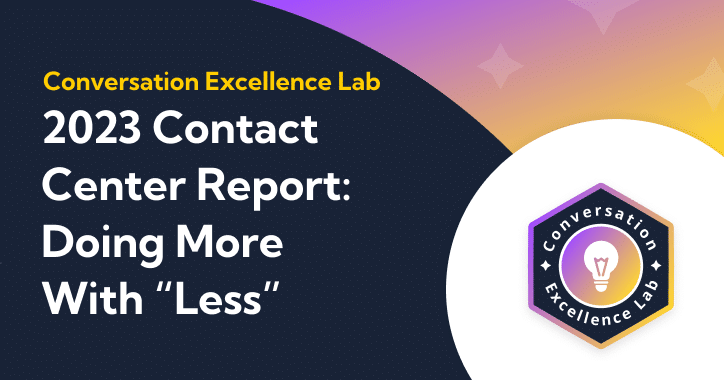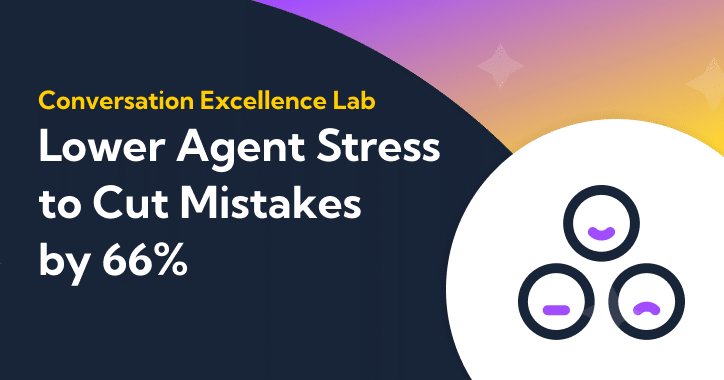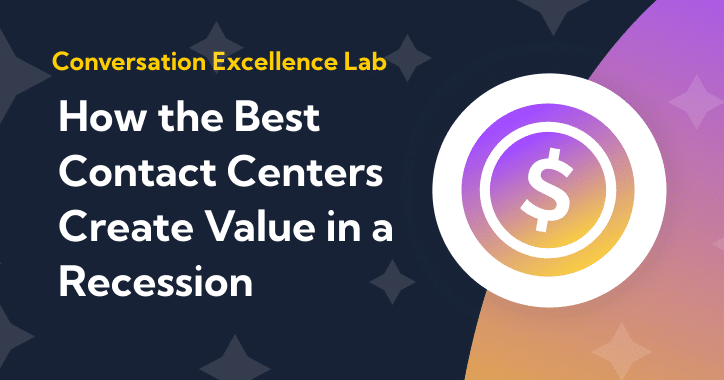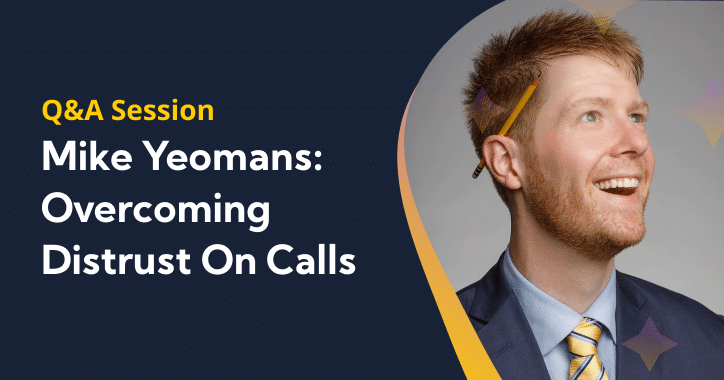With contact center turnover nearing 50% year-over-year, a lot of attention is given to how and why employees leave their place of work — and not enough is given to how they begin their time in the workforce.
The first few weeks (or months) of an employee’s time at your organization are pivotal to ensure that they are set up for success. A great onboarding experience can improve retention by 82% — but only 12% of companies get it right.
We talked to over 200 agents and 200 managers to put together a comprehensive onboarding analysis that optimizes for agent experience and retention.
Here’s what we found:
- Both managers and agents ranked 1-on-1 training as the most effective onboarding tool; no matter how you slice the data, a personalized experience is the best experience.
- Leadership often overestimates how much agents remember from onboarding.
- Larger companies reported higher onboarding effectiveness on average, but from the agent’s POV, it’s all the same.
- When deciding who will lead your onboarding training, bet on managers and supervisors: executives may be too far from the day-to-day to be impactful.
- 2 out of 3 agents want to change their onboarding to make it more personalized, thorough, and engaging.
- What managers find most important during the onboarding period has a sizable impact on knowledge retention. Sneak peek: enforcement isn’t the answer.
Get a Copy of the Report in Your Inbox
Read the results on your own time or share them with your team. No strings attached.
Subscribe to future Conversation Excellence Lab reports.
1-on-1 Training Reigns Supreme
We asked all of our respondents to rate the effectiveness of the following onboarding tools and tactics on a scale of 1 (not effective at all) to 5 (very effective):
- 1-on-1 training
- Group training
- Online learning management tools
- Peer mentor/onboarding buddy
- Competitions/incentives
- Listening to call recordings
- Customer satisfaction (CSAT) surveys
- QA scorecards
As a group, those in the manager or leadership level ranked 1-on-1 training as the most effective tool (4.6) and online learning management tools as the least effective tool (3.8). Agents had similar results, with 1-on-1 training in the top spot (4.5) and QA scorecards taking last place (3.71), followed by online learning management tools in the second-to-last place (3.74).
Figure 1: Agent vs. Managers & Leaders Rankings of Onboarding Tools and Tactics
Use Onboarding to Get Personal
1-on-1 training stayed in the number one spot for both groups regardless of whether the data was filtered by position, contact center size, industry, department, and onboarding program length.
This is intuitive: when training is given in a 1-on-1 format, it is personalized to suit the exact needs of the agent. The agent is more attentive because the training is being delivered directly to them, and retention is greater as a result.
“Coach your agents on how to improve at their jobs, and provide specific feedback where possible. Proper coaching will help those that may be struggling, and will advance those that are already doing a good job. It’s really not complicated – when you invest time and money on properly training and coaching your agents, they’ll see that they’ve got an important job to do, and will strive to improve their performance.”
Blair Pleasant, President and Principal Analyst, COMMfusion LLC; Co-Founder of BCStrategies
In contrast, online learning management tools and QA scorecards are generalized and impersonal in nature. They require zero human-to-human interaction and minimal engagement with material. Oftentimes, the learnings from these tools are devoid of context and surface-level: to dig deeper, agents have to seek out and ask for additional 1-on-1 attention to review, which can be an intimidating process.
An aspect of 1-on-1 training that was not explored in this report is the length and cadence of 1-on-1 sessions during the onboarding period. How long does a training session have to be in order to be effective? How many sessions is ideal? Do sessions have to be 1-on-1 or can they be 1-on-3, or more?
Studies show that simply a reduction in learning group size can have a tremendous effect on learning outcomes. In research on schools, it was found that four years after learning occurred, those with 32% smaller learning groups retained the equivalent of three additional months of learning compared to their peers.
Even a modest reduction in learning group size is bound to have an impact, as is 1-on-1 training of any length or cadence. See where you can make space for these tools in your existing process, within your resource constraints.
Engage New & Tenured Agents Alike with Onboarding Buddies
The second highest-rated onboarding tool for agents was peer mentorship or an onboarding buddy (4.1). These are integral; they are both ways to scale powerful 1-on-1 training and engage more tenured employees in the process. Onboarding buddies facilitate greater learning and provide social support for early frustrations. They also provide a refresh for tenured agents about the “why” behind company processes and procedures, which they may have forgotten over time.
Encourage your new hires and their tenured buddies to continue communicating after the onboarding period is over — mentorship has an outsized impact on employee attrition. Ninety-one percent of employees who have a mentor are satisfied with their job, compared to 40% of those who do not.
Here’s how you can apply these findings:
The Knowledge Retention Disparity
We asked agents, on a scale of 1 (none of it) to 5 (all of it), how much of their learnings they retained after completing their onboarding period. The average agent knowledge retention was rated as 3.7.
Our non-agent respondents included supervisors, managers, directors, c-suite executives, vice presidents, and presidents. While supervisors and managers work closely with agents, executives are more removed from the day-to-day operations of their contact center. It is not surprising then that Vice Presidents and Presidents had the largest variance from agent-reported rates at 4.1 They also rated the effectiveness of their agent onboarding the highest, at 4.3 out of 5. C-Suite Executives had similar retention (4.1) and effectiveness (4) ratings.
Supervisor reports were closer to those of agents. They rated the effectiveness of their onboarding at 3.9 and the agents’ retention at 3.8, only slightly above the retention that agents themselves reported.
Figure 2: Knowledge Retention Rate Perceptions by Title
Supervisors are the contact center’s superpower if you unleash them. If they are able to navigate the push and pull of their position, they can be an important liaison to span the distance between agent and executive.
Michelle Barbeau, Sr. Customer Enablement Manager at Balto and former contact center trainer and manager
Agents and leadership are also not aligned on how the length of onboarding impacts knowledge retention: at the supervisor level and above, agent knowledge retention was positively correlated with onboarding length. But from the agent point of view, the correlation is inverse. The longer the onboarding, the less they retain.
Figure 3: Agent and Manager & Leadership Perceptions of Agent Knowledge Retention by Onboarding Length
At first glance, it seems intuitive that a longer onboarding process would be more thorough, and therefore more helpful to agent knowledge retention. But let’s take a closer look.
"Too often, training is focused on covering every possible scenario. Agents need to be comfortable with the top 5 call reasons and know where to go for help for all others. It is unrealistic to expect a trainer or agents to be prepared for everything."
Susan Tyrrell, Director of Customer Success at Balto and former contact center leader
The primacy-recency effect, also called the serial-position effect, states that we remember the content at the beginning of a learning episode best, followed by the content at the end of a learning episode. With this effect in mind, consider a ten-week onboarding. Agents will remember the first week very well, and the last week, but the weeks in the middle may be murky in their memory.
One way to combat this effect is to make learning episodes more memorable and interactive using discussions, call simulations, and collaborative exercises. Apply experiential learning theory, which suggests that people learn best by doing, to your onboarding modules to help protect against the primacy-recency effect.
Finally, lengthened onboarding periods may not allow for adequate social learning, which suggests that most information is gained through observing, modeling, and imitating the behaviors of others — not through learning management systems or other non-interactive methods.
Let’s bring these concepts back to the contact center: if people learn best by experiencing things and observing others, then the ideal onboarding period would minimize rote memorization, and maximize for both on-the-job simulations and peer-to-peer processes, like shadowing and roleplaying.
During an extended onboarding period, it makes sense then that agents would report lower knowledge retention. Get them the information and resources they need, then scaffold their on-the-job learning with regular check-ins and support for the best results.
Here’s how you can apply these findings:
More Employees = Better Onboarding?
Our respondents worked for companies ranging from five employees to fifteen thousand employees. As organizations grow, all processes evolve and shift to scale and accommodate changing demands. Onboarding is not entirely immune from those changes, but our data suggests that differences are not as stark as they may be for other company operations.
For example, companies of all sizes used largely the same onboarding tools. Respondents were asked to rate how effective certain tools were in their own processes, or mark if they did not use a given tool at all. 90% of respondents used all tools listed at some point during their onboarding — and the effectiveness rankings were similar, regardless of company size.
Figure 4: Tool Effectiveness Ranking by Company Size
So at all company sizes, agents, managers, and executives alike know what tools work best — the difference, then, is how they put them into action.
We asked agents to rate on a scale of 1 (not at all) to 5 (very) how prepared their onboarding made them feel, and the answers displayed a horseshoe pattern according to company size. Both agents at contact centers with fewer than 20 employees and those at contact centers with over 10,000 employees reported a 3.7. Those in the middle of the horseshoe, between 500-3,000 employees, reported the highest preparedness at around 4.1.
Figure 5: Agent Preparedness by Company Size
Agents at the smallest companies may feel less prepared because their company’s onboarding processes have not yet been ironed out, while those at the largest companies may feel less prepared because they get less 1-on-1 attention if they are onboarded alongside a large cohort of others.
But although companies with 500-3,000 employees fared the best in terms of agent preparedness, they were not as confident in their onboarding effectiveness as larger companies. We asked respondents at the supervisor level and above how effective their onboarding was, and those at contact centers with fewer than 20 employees reported a 3.4 out of 5 while those with 5,000 - 10,000 employees reported a 4.5 and those with 10,000+ employees reported a 4.
Figure 6: Manager & Leadership Perception of Onboarding Effectiveness by Company Size
From an agent’s perspective, however, there was no statistically significant difference in onboarding effectiveness by contact center size. So those at the supervisor level and above at the largest companies feel like their onboarding is more effective, even when it may not be.
Leaders at larger companies have presumably run their onboarding program on a much larger cohort of new agents than leaders at smaller companies. Over time, as hundreds of agents go through the onboarding process, the program may ossify and become standard, even if it is not achieving optimal results.
Here’s how you can apply these findings:
Put Your Managers and Supervisors In Charge
We asked our respondents to select all of the people who were involved in leading their company’s onboarding process from the multi-select list below:
- Executives
- Department leadership (Director, VP, etc)
- Managers and/or supervisors
- Dedicated trainers whose primary responsibility is to onboard new agents
- Other front-line representatives
Figure 7: Breakdown of Onboarding Involvement
Our analysis found that there was a statistically significant relationship between who was involved in leading onboarding and the onboarding’s knowledge retention outcomes.
According to agents, the highest knowledge retention was achieved when supervisors and/or managers were involved in onboarding, and the lowest scores were achieved when executives took the lead.
Figure 8: Agent Knowledge Retention by Onboarding Involvement
While supervisors and managers work with agents on a daily basis, executives are a few layers removed. They might understand the big picture of contact center operations but lack the nuance to conduct trainings independently. It follows then that supervisor- or manager-led onboarding would result in higher agent knowledge retention.
But knowledge retention isn’t the only metric worth looking at. While executive leadership in onboarding was correlated with lower knowledge retention, executives still have an important role to play in culture, morale, and belongingness.
Gallup encourages more tenured employees — including executives — to reach out to new hires. A message as simple as “how is your first week going?” is not only welcoming to a new hire but encourages them to ask questions and form relationships.
"We walked the agents over to meet the c-suite and other departments within the first day or two. It makes a huge difference in direct culture transfer and belonging. You could see the light bulbs going on with the new hires when they heard the CEO say the same cultural message I was sharing in the training room — we meant it."
Michelle Barbeau, Sr. Customer Enablement Manager at Balto and former contact center trainer and manager
Consider this scenario: a cohort of new agents is greeted at the beginning of their first day on the job by their company’s CEO, who tells them how welcome and needed they are, and how excited the company is to have them.
Another example of executive involvement could include leadership office hours during onboarding, or an Ask Me Anything session led by department heads to allow new hires to get to know their leadership and better understand the overall company goals.
Executives can also benefit from sitting in on agent onboarding from time to time and refreshing themselves on what their front line is doing — or even taking calls themselves. Agents are among the few people at a company who actually interact with customers and hear their problems and concerns firsthand. This is invaluable information for an executive to have. To best understand your own customers, make a point to stay close to your agents — even as you stay out of their onboarding modules.
Here’s how you can apply these findings:
What Agents (And Leaders) Have to Say
The Agent POV
We asked agents an open-ended question: What is one thing you would change about your company’s onboarding?
The results fell into seven categories:
- Length (longer or shorter)
- More 1-on-1, individualized attention
- Different content altogether
- More engaging content
- More support from managers
- Better structure and guidelines
- Nothing
Figure 9: What Agents Want to Change About Their Onboarding
Approximately two out of three (64.5%) agents wanted to change something about their onboarding. The top three changes that agents wanted to make were: longer onboarding (17.2%), more 1+1 attention (11.8%), and more engaging content (11.8%).
"New agents need to feel a part of something from day one to succeed. That means the Supervisors and leadership in the contact center need to be transparent and visible to the new agents throughout the process, ensuring the new hire feels connected beyond the new hire class."
Susan Tyrrell, Director of Customer Success at Balto and former contact center leader
Agents both wanted their onboarding to be longer, and stated that they retained less knowledge when onboarding was longer. What’s the sweet spot? The trick is to minimize the time that agents learn in a static setting, and maximize the amount of time they learn on the job. It can take up to 8 months for an employee to reach their full productivity, so try extending your on-the-job onboarding to accommodate that. Incorporating check-ins at performance milestones and regular feedback during an employee’s first year can accelerate the time it takes for new hires to get up to speed by 34%.
In terms of 1-on-1 time, 96% of new employees said that meetings with their direct manager are crucial for a strong onboarding experience.
These data points tell a clear story: agents want a more engaging, supportive onboarding process. They have to learn all the information they need in order to do their job well, but on top of that, they want their onboarding time to challenge and inspire them with collaborative, interactive modules. They want to get to know their supervisors, managers, and colleagues, and they want their onboarding to be agent-focused in addition to preparing them for their roles.
The Leadership POV
We asked respondents who were at the supervisor level and above a similar open-ended question: What is the most important thing to get right when onboarding new front-line representatives?
We broke down the results into four categories:
- Agent Focus
- Agent Enforcement
- Agent Preparedness
- Service Importance
Figure 10: What Managers & Leaders Value in Onboarding
The Agent Focus category included such responses as “make new employees feel wanted” and “make sure they feel comfortable”, while the Agent Enforcement category saw responses like “properly scrutinize them” and “make sure they get a good grade on preliminary exams”.
"If we’re thinking about people development, how are we designing for the individual to take advantage of their learning and really own it? How are we designing for that group effect, the community effect… and how are we shaping the rules, tools, and technologies towards that learning victory? In 2030, I want to see everyone who is working as a leader of an organization or a team thinking about it and being more deliberate in practice. We’ll learn more about how to do people development by then."
John Dijulius, President of the DiJulius Group
Enforcement concerns itself with strict adherence, while an agent focus values empowerment, which leads to better agent experience outcomes.
Now, agents still need to be prepared. The Agent Preparedness category included responses like “proper training on realistic situations” and “role play as many situations as possible and let them shadow calls”.
While preparedness focuses on process, enforcement focuses on results. A purely results-driven onboarding will put agents under stress to perform, and discourage them from being creative and making processes and tools their own. By putting in place a strong process, however, the results will follow — this shift from enforcement to empowerment through preparedness is a powerful lever you can take advantage of to improve the agent experience.
In addition to preparing new employees for their roles, onboarding also serves to welcome employees into a company’s culture. To that end, an emphasis on Service Importance drives home that a company is customer experience-focused and that agents should do their best to make their time on the phone pleasant for both parties. Responses in this category included statements like “customer courtesy and listening skills” and “working on communication techniques”.
From our previous research, we know just how much executive perceptions can have an influence on attrition and customer experience. How did onboarding effectiveness vary depending on what those at the supervisor level and above found most important?
Figure 11: Onboarding Effectiveness by Manager & Leaders Focus
The highest onboarding effectiveness was achieved when those at the supervisor level and above took an agent focus — and the worst outcomes were realized when the focus was on enforcement.
Here’s how you can apply these findings:
Conclusion
Twenty-three percent of new hires turn over before their first anniversary, and 33% start looking for a new job within their first 6 months of employment.
At the beginning of this report, we posed a question: If a great onboarding experience can improve retention by 82%, then why do only 12% of companies get it right?
After hearing from over 400 contact center employees, one of our overarching conclusions is that supervisors, managers, directors, and executives are not necessarily clued into what agents are thinking and feeling — they don’t know exactly how effective their onboarding is, and so they don’t know how to fix it.
The first step is to understand how your onboarding is working (or not working) for your employees, and diagnose the underlying issues. Do you need to introduce more 1-on-1 coaching? Do you need to make sure direct supervisors are leading most of the sessions? Or do you need to step back and reassess your philosophy on onboarding as a whole, and value the agent’s experience and development over a focus on enforcement?
If you’ve had success with other strategies or would like to discuss how to level up your company’s onboarding process, get in touch with us at cel@balto.ai. We’d love to hear from you.
Demographics
We surveyed 408 people for this report. 204 were agents and the remainder were managers (84), supervisors (45), directors (27), C-Suite executives (26), Vice Presidents or Presidents (14), and Other (8). All respondents were based in the U.S.
Figure 12: Breakdown of Respondents
We classified agents using the multiple choice option “My primary job is to speak to customers or prospects on the phone” and all others as “My primary job is to manage people who speak with customers or prospects on the phone” before getting more granular on their particular titles in the questions that followed.
For the agent subset, the gender breakdown was 36.8% male and 62.8% female. The most common age group was 35-44 (33.8%) followed by 25-34 (27.5%), 45-54 (19.6%), 55+ (13.7%), and 18-24 (5.4%). In terms of tenure, 41.7% of agents had been in their job for 5+ years, followed by 3-5 years at 18.6%
Figure 13: Agent Tenure
The gender breakdown among our respondents at the supervisor level and above was 60.3% male and 39.7% female. The average age was 43 and 44.1% of respondents were in the 35-44 range, followed by 25% aged 45-54, 17.7% aged 25-34, 13.2% aged 55+, and 0% aged 18-24. A little over 68% of respondents in this subset had been in their job for 5+ years, followed by 15.7% in the 3-5 year range.
Figure 14: Position and Tenure Breakdown in Manager & Leadership Subset
Our survey captured respondents from a wide range of industries. The most represented industry among our respondents was healthcare (15.9%) followed by telecommunications (10.8%). The least represented industries were travel & hospitality (1.5%) and BPOs (1%).
Figure 15.1: Industry Breakdown of Respondents
Figure 15.2: Industry Breakdown of Respondents
A little over 28% of respondents worked for a company with 21-100 employees, followed by 101-500 at 20.6%, <20 at 18.4%, and 501-1,000 at 15.2%. Those working for companies with over 1,000 employees made up 17.7% of respondents as a group.
Figure 16: Breakdown of Company Size
Methodology
This research was conducted in collaboration with third-party research firm Centiment in August 2022. Survey participants were given a screening question after which they received different questions depending on if they identified as agents or management-level and above at contact centers. Respondents who did not align with either of the above buckets were eliminated from the survey.
Agents were given 9 questions about their onboarding experience and managers were given 11 questions. Both parties were then asked to self-report on 12 demographic questions. The survey included an attention check at the midpoint to ensure that respondents were fully attending to the content of the survey.
The sample population spanned a wide range of executive experience levels, industries, departments, age groups, and other demographic parameters.
All statistical analysis was performed using one-way ANOVA and Kruskal-Wallis tests, and verified with Tukey's Honestly-Significant Difference and Dunn's post-hoc tests.
Sources
Allied HR IQ. (2012). 2012 Allied Workforce Mobility Survey: Onboarding and Retention. Allied Van Lines. Retrieved November 1, 2022, from https://www.allied.com/docs/default-source/pdf/alliedworkforcemobilitysurvey.pdf
Balto. (2021, January 11). 2021 Contact Center Agent Survey Report - Balto Ai. RSS. Retrieved November 1, 2022, from https://www.balto.ai/research/2021-agent-report/
Balto. (2021, October 22). We Surveyed 500 Managers About Call Center Coaching. Conclusion: It’s Not Working. - Balto Ai. RSS. Retrieved August 9, 2022, from https://www.balto.ai/research/call-center-coaching-manager-survey/
Balto. (2022, March 29). Contact Center Attrition: What Agents Want in 2022 - Balto Ai. RSS. Retrieved November 1, 2022, from https://www.balto.ai/research/contact-center-attrition-2022/
Balto. 2022, August 3). How to Recession-Proof Your Contact Center, According to 360+ Executives - Balto Ai. RSS. Retrieved November 1, 2022, from https://www.balto.ai/research/how-to-recession-proof-your-contact-center/
Basu, N., & Schnidman Al. Inside the Mind of Today’s Candidate. LinkedIn Talent Solutions. Retrieved November 1, 2022, from https://business.linkedin.com/content/dam/me/business/en-us/talent-solutions/resources/pdfs/inside-the-mind-of-todays-candidate1.pdf
Chingos, M.M., & Whitehurst, G.J. (2011, May 11). Class Size: What Research Says and What it Means for State Policy. Brookings. Retrieved November 1, 2022, from https://www.brookings.edu/research/class-size-what-research-says-and-what-it-means-for-state-policy/
Ferrazzi, K. (2015, March 25). Technology Can Save Onboarding from Itself. Harvard Business Review. Retrieved November 1, 2022, from https://hbr.org/2015/03/technology-can-save-onboarding-from-itself
Forbes Expert Panel. (2022, June 10). 14 Great Examples Of Experiential Learning In The Workplace. Forbes. Retrieved November 1, 2022, from https://www.forbes.com/sites/forbescoachescouncil/2022/06/10/14-great-examples-of-experiential-learning-in-the-workplace/?sh=1ec94c6147a7
Foster, W. (2015, December 2). All Hands Support: Why Everyone–Even Executives–Should Spend Time in Customer Service. Zapier. Retrieved November 1, 2022, from https://zapier.com/blog/everyone-on-support/
Gallup. Why the Onboarding Experience Is Key for Retention. Gallup. Retrieved November 1, 2022, from https://www.gallup.com/workplace/235121/why-onboarding-experience-key-retention.aspx
Kurter, H.L. (2018, December 3). 10 Simple Ways To Improve Onboarding For Increased Retention. Forbes. Retrieved November 1, 2022, from https://www.forbes.com/sites/heidilynnekurter/2018/12/03/10-simple-ways-to-improve-onboarding-for-increased-retention/?sh=3b667f304b35
Laurano, M. (2015, August). The True Cost of a Bad Hire. Brandon Hall Group. Retrieved November 1, 2022, from https://b2b-assets.glassdoor.com/the-true-cost-of-a-bad-hire.pdf
Mann, A., & McCarville, B. (2016, January 19). Engaging Employees: Big Companies Need the Most Improvement. Gallup. Retrieved November 1, 2022, from https://news.gallup.com/businessjournal/188675/engaging-employees-big-companies-need-improvement.aspx
Meinert, D. (2016, June). Onboarding Mistakes to Avoid And Some Creative Ideas to Adopt. The Society For Human Resource Management. Retrieved November 1, 2022, from https://www.shrm.org/hr-today/news/hr-magazine/0616/pages/onboarding-mistakes-to-avoid-and-some-creative-ideas-to-adopt.aspx
Northern Illinois University Center for Innovative Teaching and Learning. (2012). Instructional scaffolding. In Instructional guide for university faculty and teaching assistants. Retrieved November 1, 2022, from https://www.niu.edu/citl/resources/guides/instructional-guide
Seibert, S. E., Wang, G., & Courtright, S. H. (2011). Antecedents and consequences of psychological and team empowerment in organizations: A meta-analytic review. Journal of Applied Psychology. Retrieved November 1, 2022, from https://doi.org/10.1037/a0022676
Sibisi, S., & Kappers, G. (2022, April 5). Onboarding Can Make or Break a New Hire’s Experience. Harvard Business Review. Retrieved November 1, 2022, from https://hbr.org/2022/04/onboarding-can-make-or-break-a-new-hires-experience
Sousa, D.A. Primacy/Recency Effect. Lancashire Professional Development Service. Retrieved November 1, 2022, from https://www.lancsngfl.ac.uk/secondary/math/download/file/How%20the%20Brain%20Learns%20by%20David%20Sousa.pdf
The Society for Human Resource Management. Understanding Employee Onboarding. SHRM. Retrieved November 1, 2022, from https://www.shrm.org/resourcesandtools/tools-and-samples/toolkits/pages/understanding-employee-onboarding.aspx
University of California, Berkeley. How Social Learning Theory Works. UC Berkeley. Retrieved November 1, 2022, from https://hr.berkeley.edu/how-social-learning-theory-works
Western Governors University. (2020, June 8). Experiential learning theory. WGU. Retrieved November 1, 2022, from https://www.wgu.edu/blog/experiential-learning-theory2006.html#close
Wetherwell, E., & Nelson, B. (2021, August 12). 8 Practical Tips for Leaders for a Better Onboarding Process. Gallup. Retrieved November 1, 2022, from https://www.gallup.com/workplace/353096/practical-tips-leaders-better-onboarding-process.aspx
Wronski, L., & Cohen, J. Nine in 10 workers who have a career mentor say they are happy in their jobs. CNBC. Retrieved November 1, 2022, from https://www.cnbc.com/2019/07/16/nine-in-10-workers-who-have-a-mentor-say-they-are-happy-in-their-jobs.html

